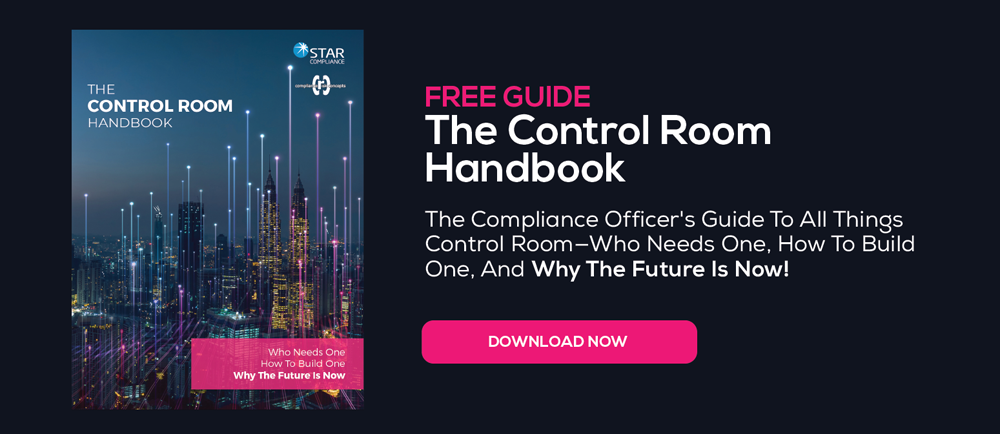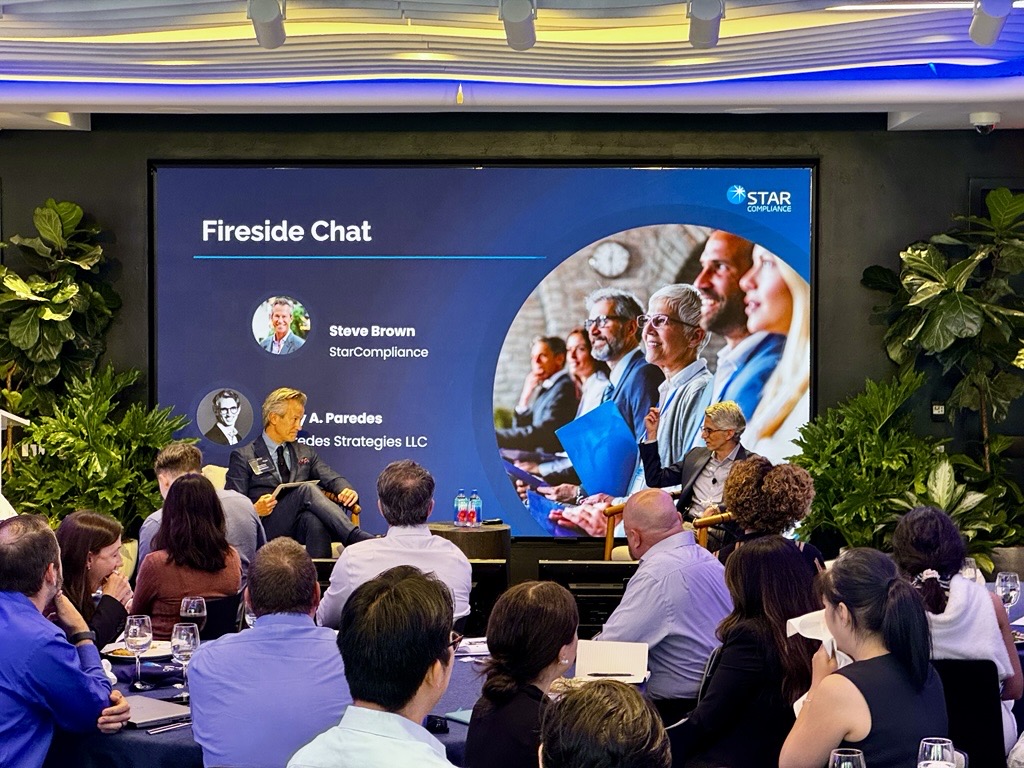5 Takeaways From Our Deep-Dive Webinar On Control Room Fundamentals
Why control room is like a bike race and other insights from a recent Star webinar with control room veteran, compliance consultant, and co-author of a forthcoming e-book on the control room function, Steve Brown
September has been the month of control room insights and best practices in this space. We’ve brought you 5 Features The Best Control Room Software Will Have. We’ve told you all about 360-Degree Conflict Search—the game-changing new capability of our Compliance Control Room software solution. And we’ve provided a sneak preview of our forthcoming e-book—The Compliance Control Room Handbook.
Today we bring you the top five takeaways from a recent Star webinar on the control room function: Deep Dive—The Building Blocks Of An Efficient, Effective Control Room. The webinar featuring control room veteran Steve Brown, previously from Compliance Risk Concepts—a financial compliance consulting firm.
1. DEFINING SCOPE AND MANDATE IS CRITICAL
“The Tour de France is a 2100 mile bike race over 21 days. That’s a marathon, not a sprint. And it’s a team effort: the riders have to rely heavily on each other and support staff, which made me think of the control room function.”
One of the biggest challenges faced by control room teams is the sheer volume of the work—whether it’s clearing bankers for a deal team, staying on top of potential new conflicts, or managing the near-constant flow of MNPI. For Brown, working in a control room is a team effort—like the Tour de France—and the teams that make it successfully to the finish line of the control room marathon are those that pay close attention to scope and mandate. Without the focus that a clear scope and mandate brings, control room teams can spin their wheels and critical deal-side conflicts can all too easily be missed.
2. CURIOSITY IS A CRITICAL QUALITY
Asked to identify what he thought were the most important qualities or characteristic of a good control room officer, Brown didn’t hesitate naming one in particular: curiosity The best compliance officers should be problem solvers. That means they need to keep their eyes and ears open for potential problems and enjoy identifying and fitting together all the puzzle pieces that go into monitoring for the potential misuse of MNPI and conflicts.
Is there any other quality hiring managers should be on the lookout for? “Don’t be afraid to consider hiring from non-traditional sources,” says Brown. “For instance liberal arts majors, like music majors, are typically well rounded and open minded, which I’ve found translates into an ability to see the big picture.”
3. TEAMS NEED TO GET PLUGGED IN AND STAY PLUGGED IN
Asked about the big challenges firms face that set out to develop control rooms, Brown zeroed in immediately on one thing—making sure you have the right information. What does this mean at the collection level? For control room officers and control room processes? Brown: “The control room needs to get plugged in and stay plugged into new opportunities, new businesses, and new services that are being offered. This means knowing what’s going on in committees. It means staying in front of—and in constant contact with—bankers at every stage of the deal cycle in order to know what’s going on. To stay on top of the right information.”
If control room teams aren’t able to stay on top of the right information, then the firm is going to be exposed to risk. And the right information necessarily implies current information. Brown: “If the information control rooms are collecting has gone stale, then all the monitoring of it in the world won’t do the firm any good. One common example of stale information is dead deals still showing as live in the system, because the deal-team bankers haven’t notified the control room of their demise. Processes need to be put in place and ingrained in the culture. And anything that can make it easier for bankers to report critical updates to the control room, like tapping into CRM solutions to augment watch list information, should be a top consideration and priority.”
4. THERE NEED TO BE REPEATABLE PROCESSES
“To me,” offers Brown, “one of the biggest challenges, after you figure out what you’re covering and what information you need, is how you’re going to collect that information. There need to be repeatable processes—where knowledgeable control room officers can interact with people they’re monitoring in order to obtain the necessary information and assess it.” So consistency counts, along with well-considered processes that become part of control room culture.
This brings us to a related challenge: getting hold of the kind of experienced people who have done the job before. Brown: “I think for firms that have locations outside major metropolitan areas—say New York, London, Chicago, San Francisco, etc.—it can be tricky to find personnel who are knowledgeable and have the skills to come in and set up a control room from scratch, and who can then train new control room officers. I think this is exacerbated in these work-from-home times, i.e., as a new control room officer, you’re not sitting in a room with someone looking over your shoulder and showing you the ropes.”
5. TECH CAN DELIVER REPEATABLE PROCESSES
In so many fields, technology is the answer to the question of how to deliver repeatable processes. Why search through the CD racks again and again at a record store (if any still even exist) to find new music when an algorithm—delivered via a service like Spotify or Apple Music—can do that for you? Why flip through map after paper map to find the best route to your destination when a GPS app—like Apple or Google Maps—can do that task for you unerringly over and over? And more to our central theme, why log into system after firm system to try and track the flow of MNPI and manually piece together deal-team conflict puzzles when an integrated, centralized, single platform can do that for you ad infinitum?
Brown: “It’s nice to avoid the swivel chair effect—literally wheeling from screen to screen to check individual systems for conflicts and information barrier breaches—which has been part of being a control room officer from day one. I know of a number of firms using technology to create repeatable processes—a.k.a., automation—for control room staff. Control room platforms have come a long way, and are only getting more capable. Hence, there’s less need for control room teams to conduct manual searches to monitor MNPI and conflicts.”
Does the term “swivel-chair effect” ring a bell? If so, do yourself a favor and check out Star’s Compliance Control Room software.
To learn more about the services Steve Brown and Compliance Risk Concepts can offer, please visit: compliance-risk.com or email steve.brown@compliance-risk.com






